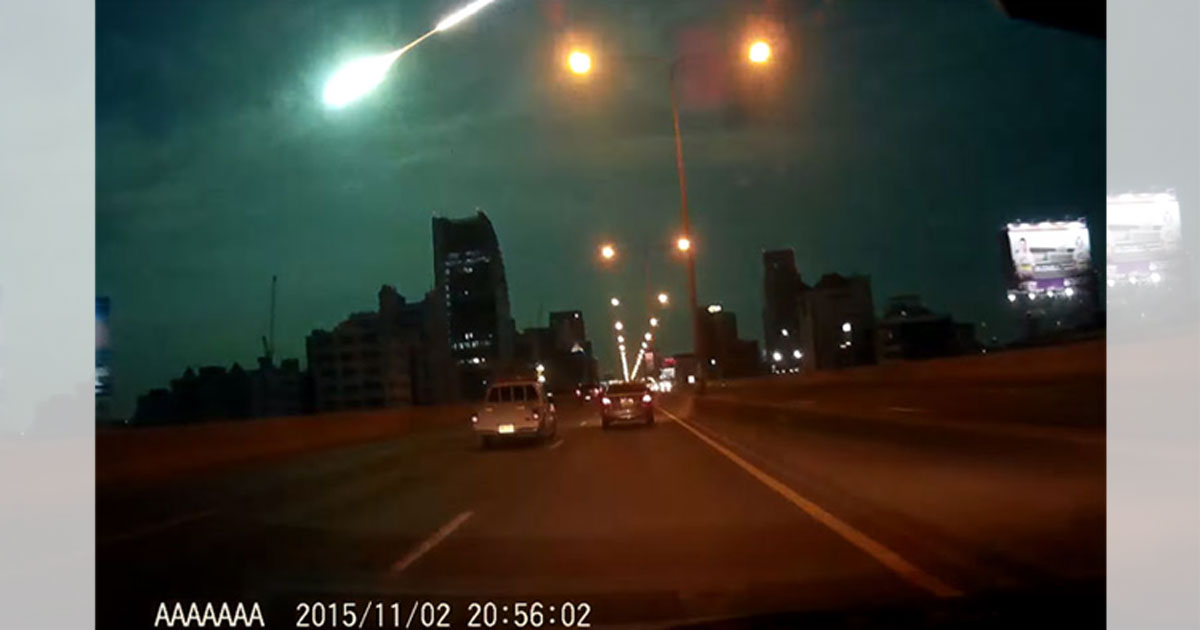Inhabitants of the Thai capital, Bangkok, have been treated to two separate cosmic spectacles within the space of two months.
An illuminated green “fireball” meteor lighted the night sky as it zipped across the horizon around 8.40pm on Monday, Nov. 2, 2015.
Drivers' dashboard cameras recorded the spectacular phenomenon, which scientists said was part of the annual Taurid meteor shower visible at various points across the world.
" frameborder="0" allowfullscreen>
" frameborder="0" allowfullscreen>
Fireballs are defined as meteors which are brighter than the planet Venus.
Astronomers said the green meteor seen in Bangkok was a special kind called a bolide, which explodes in a bright flash after streaking across the sky.
The green hue is due to the meteor's chemical composition.
Previously, two months before this incident on Sept. 7, 2015, an extremely bright fireball was seen over Bangkok -- also on a Monday, but this time in the morning at about 8.40am.
Many witnesses saw and heard the event and it even left a vapour trail as well.
Once again, vehicle cams were on hand to catch a glimpse of the spectacle -- an impressive burst of light given that dawn had already broken.
" frameborder="0" allowfullscreen>
This one is from a motorcyclist:
" frameborder="0" allowfullscreen>
Fireballs are known to be produced at high rates during the Taurid meteor shower.
The annual meteor shower takes place between Nov. 5 and Nov. 12.
America's Meteor Society have predicted that 2015 may be a year with an unusual number of Taurid fireballs.
The society also said that most Taurid meteors appear to shoot upwards, unlike the fireball seen in Thailand.
The National Astronomical Research Institute of Thailand put out a press release on Sept. 14, estimating that the meteor was about 3.5 metres in diameter with a mass of 66 tonnes, entering the atmosphere at 21 km per second and having maximum brightness at 29.3 km altitude.
The impact energy was equivalent to 3.5 kilotonnes (3.5 million kg) of TNT, its trajectory was 269.8 degrees, with an impact angle of 45.4 degrees.
It also estimates that meteorite remnants may have fallen around the area of Sai Yok National Park.
Related article:
If you like what you read, follow us on Facebook, Instagram, Twitter and Telegram to get the latest updates.
